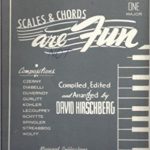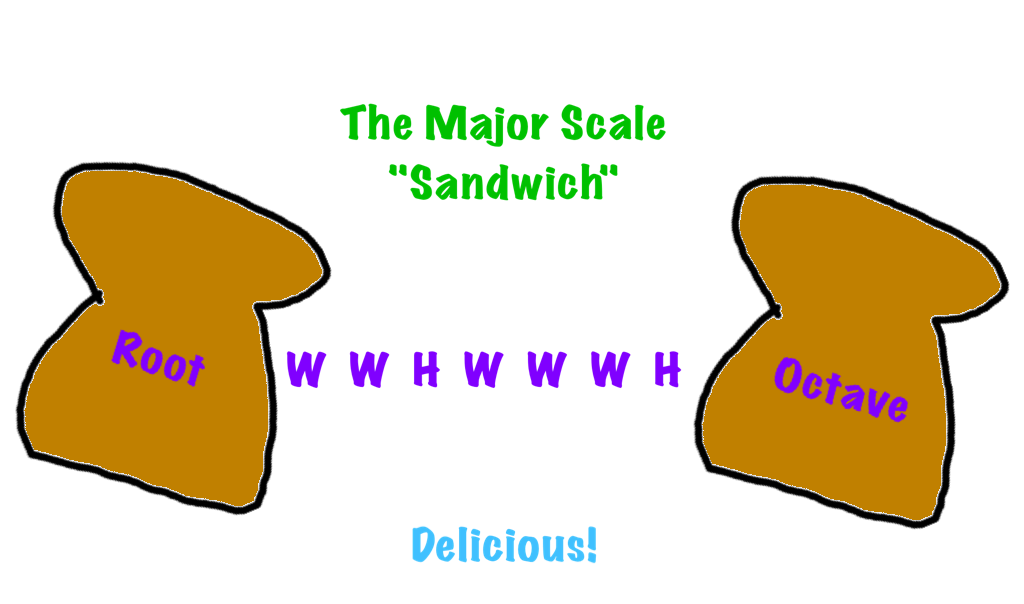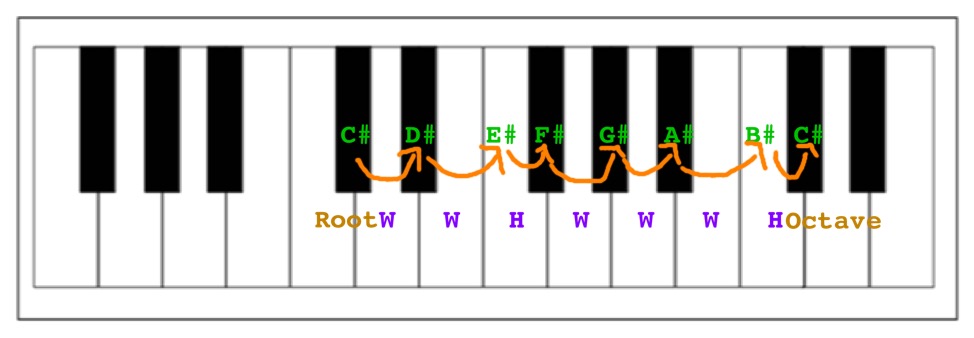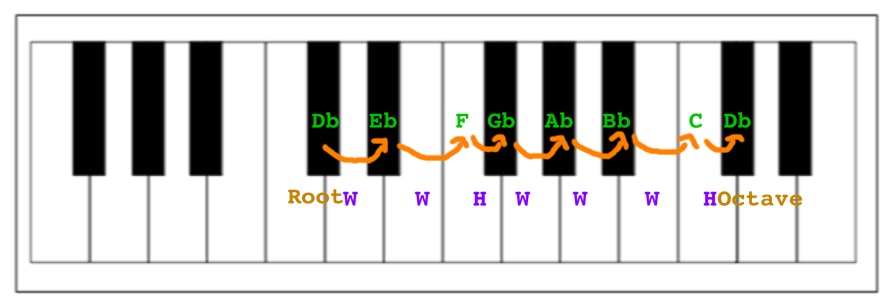The Major Scale:
How to construct a major scale in any key to help you play by ear, play in any key, and play on the fly
First impressions
I still remember scales from when I was a kid. (Ugh.)
I had this book of scales – I thought they were just finger exercises. My teacher would assign one of the exercises for me to practice. To execute this, I would read the notes and play them exactly as they were written.
Technically, I was playing a scale. But I actually had no idea what a scale was, or how to construct a scale on my own. And I certainly didn’t learn why scales are useful or how to use them.
It’s not hard to see why I thought scales were boring. Practiced in that manner, they simply had no life, no appeal at all.
Love at second sight
Fast forward a few years. I had learned to play chords, and started seriously playing by ear. I dabbled in music composition.
Those dreaded scales came up again – but I learned about them in a whole different way this time.
I quickly discovered that not only could I now build scales on my own, but I could use scales to help me with all sorts of wonderful things, such as
- playing the melody of a song by ear
- figuring out the common chords of any key
- choosing the right notes when improvising
- transposing chords from one key to another
Suddenly scales (and all of music theory 🙂 ) seemed a lot more appealing and useful to me!
In this post, I will share with you to the gift that is the Major Scale.
How to construct any major scale
You can use the following formula to construct the major scale starting from any note:
W = Whole Step
H = Half Step
Here’s how it works:
The major scale formula is like the filling of a sandwich. The bread
of the sandwich are the root note on one end and the root note one octave up on the other end.
-
Choose a note to start from.
That will be the Root note of the scale.
(For example, C.)
-
Follow the formula to find the next note. Repeat.
Go up a whole step or a half step to the next note in the scale, as indicated by the formula.
Repeat until you have completed the formula and reached the root note again an octave up from where you started.(Example: (Root = C) Whole (D) Whole (E) Half (F) Whole (G) Whole (A) Whole (B) Half (C = Octave))
-
Name the notes in the scale.
There are 7 notes in the major scale. There are also 7 different letter names on the piano: A, B, C, D, E, F, G.
Each letter name can be used exactly once. This is obvious for an easy scale like C Major, but less obvious for scales that have several flats or sharps.
Start the from the root (for example, C). The next note after the root gets the next available letter (D). Continue to name the notes of the scale, in order, until you have used up all the letters and you come back to the root letter an octave up.
Some letters may have sharps or flats. (But you will never have both sharps and flats in the same scale – it’s either one or the other!)
A Harder Example: C#/Db Major Scale
I picked the C#/Db Major Scale as the second example because it is a good illustration of the use each letter name once
principle we mentioned earlier.
C# and Db are enharmonic – that means that they refer to the same note. The two scales are completely identical except for the way we name the notes.
Root – W W H W W W H – Octave
Applying this formula gives us: (Root = C#) Whole (D#) Whole (E#) Half (F#) Whole (G#) Whole (A#) Whole (B#) Half (C# = Octave)
And: (Root = Db) Whole (Eb) Whole (F) Half (Gb) Whole (Ab) Whole (Bb) Whole (C) Half (Db = Octave)
Note the use of E# for the note that is more familiar to most people as F
and the use of B# for C
. This is because of the use each letter name once
rule. You can see that the Db scale is a more user friendly way to refer to this scale, since it contains only five flats as compared to the seven sharps in the C# Major Scale, and it uses the more user friendly F and C instead of E# and B#.
Conclusion
That’s it! Now you can construct any major scale by yourself!
Some people’s eyes glaze over when it comes to music theory. This stuff is incredibly powerful and can truly take your playing to a whole new level! Work through it and master it by figuring out the major scale in several different keys.






This is really well done!! I enjoyed the read.
Thanx for sharing.
Doda Kreindel
Thank you and thanks for reading!
Hi,
I’m looking for kumzitz style songs (think Acheinu, Dveykus group, etc.), just melody and chords. I love your material and the techniques you shared, learning a lot!